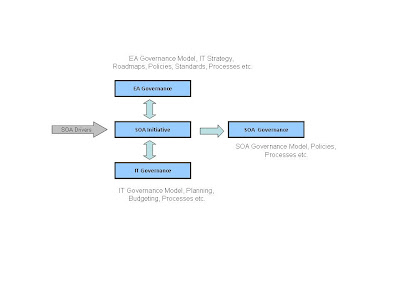In the modern day enterprise, building efficient applications as a composition of cooperating components depends significantly on having a thorough knowledge of both, component performance, as well as component interactions. Hence, to make effective design decisions concerning configuration, deployment and interconnection, it is important to compliment the traditional application development processes with 'performance centric' methodology.
This seems to be ignored without knowing the additional cost which organisation has to pay in re-engineering the applications. I find it very interesting when I see these challenges repetitively in almost every implementation. Why don't we ensure that enterprise applications are designed for performance and delivery processes are performance-centric? What is the missing link of the Jigsaw?
Thursday, 16 September 2010
Monday, 31 May 2010
Move beyond Web Analytics
Internet Marketing is getting matured and it is the right time for the organization to move beyond web analytics and direct towards web intelligence. We can leverage data from various sources like Email marketing, social media optimization, search engine optimization, search analytics along with eCommerce MI data related to customer behaviour, channel availability/stability and usage by your business processes to provide better web intelligence.
Monday, 23 November 2009
BPM, BRE and BI
I have seen many organisations have isolated approach for SOA/BPM (Business Process Management), BRE (Business Rule Engine) and BI (Business Intelligence) areas. With the current economic environment where there is frequent changes are happening in regulation and business agility is almost must have requirement to be in ever increasing competitive market, there is a need to start focusing on synergies between BPM, BI and BRE. In fact, these technologies/techniques will bring great business impact when used together than when used in isolation. Convergence of these technologies together will bring greater business agility. Some examples where it can be applied are:
1. Regulatory Compliance like solvency II etc.
2. Complex decisions using HTM (Human Task Management): HTM can be part of the core business processes like claim processing, referrals and standard Enterprise Content Management life cycle, Call Centre Mgt etc.
3. Decision Support/Actions: This can be used by predictive analytics tools or complex decisions in business processes. Examples are x-sell/up, agency and customer value, call centre agents value etc
4. Complex Transformation: This can be used by either ESB(Enterprise Service Bus)/EIB (Enterprise Information Bus) to handle complex transformation rules which can involve transformation rules related to front office, back office or 3rd party/partners processes.
5. End to end tracking of transaction in the enterprise.
6. Record Management
1. Regulatory Compliance like solvency II etc.
2. Complex decisions using HTM (Human Task Management): HTM can be part of the core business processes like claim processing, referrals and standard Enterprise Content Management life cycle, Call Centre Mgt etc.
3. Decision Support/Actions: This can be used by predictive analytics tools or complex decisions in business processes. Examples are x-sell/up, agency and customer value, call centre agents value etc
4. Complex Transformation: This can be used by either ESB(Enterprise Service Bus)/EIB (Enterprise Information Bus) to handle complex transformation rules which can involve transformation rules related to front office, back office or 3rd party/partners processes.
5. End to end tracking of transaction in the enterprise.
6. Record Management
Sunday, 3 May 2009
EA, IT and SOA Governance

An Organisation should have a well-defined model and policies enforcement processes related to Enterprise Architecture (EA) Governance, SOA Governance and IT Governance.
My understanding of EA Governance and IT Governance is IT Governance looks after the IT operations and how IT services enables business operations. However, Enterprise Architecture governance influences the solution, design and delivery of IT and Business Strategy. If the Organisation is in the journey of process driven SOA then SOA Governance is key to the success. The SOA Governance policy enforcement processes use the policies, standards, guidelines and processes provided by
-EA governance to design and to align with IT Strategy and Roadmaps (mainly strategic)
-IT governance policies to enable the business operations (mainly aspects like Project Management, Release Management. Incident Management, Business Continuity Planning, Budgeting etc.)
The SOA Governance model has its own policies, standards, guidelines however; it should be aligned to the policies, standards or guidelines provided by EA and IT Governance models.
My understanding of EA Governance and IT Governance is IT Governance looks after the IT operations and how IT services enables business operations. However, Enterprise Architecture governance influences the solution, design and delivery of IT and Business Strategy. If the Organisation is in the journey of process driven SOA then SOA Governance is key to the success. The SOA Governance policy enforcement processes use the policies, standards, guidelines and processes provided by
-EA governance to design and to align with IT Strategy and Roadmaps (mainly strategic)
-IT governance policies to enable the business operations (mainly aspects like Project Management, Release Management. Incident Management, Business Continuity Planning, Budgeting etc.)
The SOA Governance model has its own policies, standards, guidelines however; it should be aligned to the policies, standards or guidelines provided by EA and IT Governance models.
Subscribe to:
Posts (Atom)
